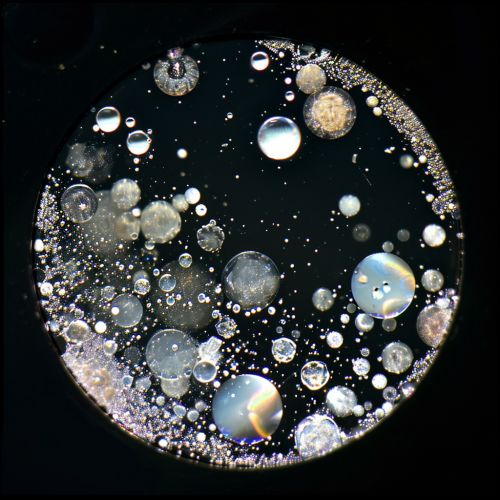Particle size distribution
Introduction
Particle size distribution (PSD) is a crucial aspect in various fields such as chemistry, physics, geology, and materials science. It refers to the characterization of particles, including their sizes, shapes, and the distribution of these sizes in a given sample. The PSD of a material can greatly affect its physical and chemical properties, including its reactivity, stability, flowability, and processability.
Importance of Particle Size Distribution
The PSD of a material can significantly influence its behavior and performance in various applications. For instance, in the pharmaceutical industry, the PSD of drug particles can affect the drug's dissolution rate, bioavailability, stability, and processability. In the construction industry, the PSD of cement particles can influence the strength and durability of the concrete. In the food industry, the PSD of food particles can affect the taste, texture, appearance, and shelf-life of food products. In the environmental sciences, the PSD of soil particles can influence the soil's water-holding capacity, nutrient availability, and susceptibility to erosion.
Measurement Techniques
Various techniques are available for measuring the PSD of a material. These techniques can be broadly classified into two categories: direct and indirect methods.
Direct Methods
Direct methods involve the physical measurement of particle sizes. These methods include microscopy, sieving, and sedimentation.
- Microscopy: This technique involves the use of a microscope to directly observe and measure the sizes of particles. It is typically used for particles that are larger than 1 micrometer.
- Sieving: This technique involves passing a material through a series of sieves with different mesh sizes. The weight of the material retained on each sieve is then used to determine the PSD. It is typically used for particles that are larger than 20 micrometers.
- Sedimentation: This technique involves allowing particles to settle in a fluid under the influence of gravity. The rate at which the particles settle is then used to determine their sizes. It is typically used for particles that are smaller than 100 micrometers.
Indirect Methods
Indirect methods involve the measurement of a property that is related to the particle size. These methods include light scattering, laser diffraction, and acoustic spectroscopy.
- Light Scattering: This technique involves shining a light on a sample and measuring the intensity of the scattered light at various angles. The size of the particles is then determined from the scattering pattern. It is typically used for particles that are smaller than 1 micrometer.
- Laser Diffraction: This technique involves shining a laser on a sample and measuring the pattern of the diffracted light. The size of the particles is then determined from the diffraction pattern. It is typically used for particles that are between 0.1 and 3000 micrometers.
- Acoustic Spectroscopy: This technique involves exposing a sample to sound waves and measuring the attenuation and speed of the sound waves. The size of the particles is then determined from the acoustic properties. It is typically used for particles that are between 1 and 1000 micrometers.
Factors Affecting Particle Size Distribution
Various factors can affect the PSD of a material. These factors include the method of production, the conditions of storage and handling, and the presence of impurities.
- Method of Production: The method used to produce a material can greatly influence its PSD. For instance, grinding can produce particles of various sizes, while precipitation can produce particles of a specific size.
- Conditions of Storage and Handling: The conditions under which a material is stored and handled can also affect its PSD. For instance, high temperatures and humidity can cause particles to agglomerate, resulting in a change in the PSD.
- Presence of Impurities: The presence of impurities can also affect the PSD of a material. For instance, impurities can cause particles to agglomerate or break apart, resulting in a change in the PSD.
Applications of Particle Size Distribution
The PSD of a material is crucial in various applications. These applications include drug delivery, food processing, environmental monitoring, and materials science.
- Drug Delivery: In drug delivery, the PSD of drug particles can affect the drug's dissolution rate, bioavailability, stability, and processability.
- Food Processing: In food processing, the PSD of food particles can affect the taste, texture, appearance, and shelf-life of food products.
- Environmental Monitoring: In environmental monitoring, the PSD of soil particles can influence the soil's water-holding capacity, nutrient availability, and susceptibility to erosion.
- Materials Science: In materials science, the PSD of a material can greatly affect its physical and chemical properties, including its reactivity, stability, flowability, and processability.


